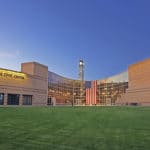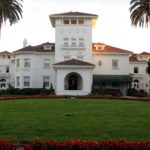
If you’re California Dreamin’, planning and designing your landscape can be challenging. You want your yard to stand out from your neighbors, even on a winter’s day. If all your leaves are brown, get familiar with the planting zone maps for Los Angeles gardeners. That’s what I would do, if I were in L.A.
Buying and planting the wrong plants for your landscape and garden can be a waste of time and money. This guide helps you decide what plants can deal with your particular L.A. landscapes and climates.
Hardiness Zones in Los Angeles
The USDA plant hardiness zone map is a reference for gardeners who want to know which plants will thrive in their area in winter. This applies to perennials, trees, and shrubs as well as the grass that covers your lawn.
Los Angeles County, as large as it is, has climate zones ranging from 7a to 11. The agricultural hardiness zone map is calculated using the average extreme winter temperatures. Plants that can survive those temperatures are labeled accordingly.
Los Angeles has a dry subtropical climate, with a dry summer and rainy winter. Frost is rare in Los Angeles even on the coldest days, but the first frost date is December 15, and the last is February 1 if you’re planting warm-season vegetables and fruits.

Los Angeles Heat Zones
The hardiness zone map is important nationwide, but a more relevant map to Los Angeles gardeners is the heat zone map developed by the American Horticultural Society. This map is based on how many “heat days” a particular area experiences each year. A “heat day” is one that reaches temperatures of 86 degrees Fahrenheit or more.
Due to the geography of Los Angeles, there are numerous heat zones, with some only a few miles wide. As an example, if you traveled from Santa Monica and San Diego to Covina, you would pass through eight different heat zones before sunset! That’s a range from one heat day to 120 heat days.
Drought- and Heat-Tolerant Plants and Grasses

When gardening in Los Angeles, be aware of your heat zone. Here in L.A., we are no strangers to drought or water restrictions. Lean toward drought-tolerant, native plants to make it easier on the plant and your water bill. However, it’s good to remember that warm-season grass plants do better in temperatures over 80 degrees Fahrenheit.
Any plant exposed to extreme heat for too long can be damaged, presenting wilting leaves, dry leaf edges, blossom and fruit drop, bolting, sunscald, and blossom end rot. Heat damage makes the plant look like it needs water, but by then the damage is done. The plant may take a long time to die or may even be stunted for the rest of its life.
The California Native Plant Society offers some site considerations to keep in mind when selecting landscape plants. They include:
- Light availability, intensity, and duration
- Water availability
- Wind and temperature extremes and exposures
- Soil types (drainage, compaction)
- Hardiness zones
- Ground obstructions
The following are some great native, drought-tolerant plants for Los Angeles:
- Beardtongue (Penstemon)
- Blue-eyed grass (Sisyrinchium bellum)
- California fuchsia (Epilobium canum)
- California milkweed (Asclepias californica)
- California poppy (Eschscholzia californica)
- California sagebrush (Artemesia californica)
- Coastal prickly pear (Opuntia littoralis)
- Common yarrow (Achillea millefolium)
- Coulter’s Matilija poppy (Romneya coulteri)
- Lemonade berry (Rhus integrifolia)
- Live-forever (Dudleya)
- Bush monkey flower (Mimulus aurantiacus)
- California gooseberry (Ribes californicum)
Cold-Tolerant Plants and Grasses
Many people tend to forgo a traditional yard for a more climate-friendly yard of desert plants and rocks. Desert plants are well suited for minimum temperatures and extremes, though any plant that’s exposed to cold temperatures for too long can be damaged.
Symptoms of cold damage or freezing include wilting leaves, dark and wet leaves, blossom and fruit drop, and leaf drop. The plant will die back very quickly if an annual plant, but if perennial, should recover with steadily warming temperatures and the growing season.
These plants and grasses do well in cooler temperatures:
- Texas Olive
- Pacific Madrone
- Western Redbud
- Pacific Wax Myrtle
- Brown-Eyed Susan
- Jerusalem Artichokes (an edible plant)
- Indian Rice Grass
- Coast Range Melic
- Deer Grass
Best Grasses for Your Los Angeles Yard
Whether your southern California climate is hot and dry, cool, or a mixture of both, you can find a grass variety for your Los Angeles yard. Explore the characteristics of each grass type and choose for your temperatures, average rain percentages, and turf types.
Bermudagrass

Photo Credit: Matt Lavin / Flickr / CC BY-SA 2.0
Loved for its hardiness and traffic tolerance, Bermudagrass is the warm-season grass of choice for golf courses, parks, and lawns. This tough grass can withstand heat and drought and grows well in any soil type. Bermudagrass is relatively low maintenance but it does not do well in the shade.
Native California Bentgrass
This long, lush cool-season grass can give any yard a natural appeal. When left long it doesn’t look unkempt but instead creates a wave-like appearance with varying shades of green. It can also be cut short and serve as turf grass.
Sand Dune Sedge

This cool-season grass grows in clumps and works great as a decorative grass but it can also be used for your yard if you don’t mind the uneven appearance. It can be kept short or long and is a very low-maintenance grass.
For a lush, verdant lawn that doesn’t need much watering, refer to the heat zone map and hardiness zone map before designing your landscape.
FAQ
California heat zones vary from zones 1-12. Los Angeles falls in heat zones 1-8.
Lucky you, most vegetables grow year-round in Los Angeles, including:
● Artichokes
● Broccoli
● Carrots
● Celery
● Garlic (sets)
● Jerusalem artichokes (tubers)
● Lettuce
● Root vegetables
The best annual plants in Los Angeles are:
● Lantana
● Creeping zinnias
● Gomphrena
● Moss rose
● African daisy
● California poppies
Pick the Plants Perfect for your Place
Once you know the heat, moisture, and sun exposure in your garden zone and you understand the requirements of your plants, you can grow a great landscape in L.A. If you find it a struggle to choose the right plants and grass types for your yard, you could consult a local landscaping pro. They’ll do the work while you’re California Dreamin’.
Main Image Credit: Ron Reiring / Flickr / CC BY 2.0





